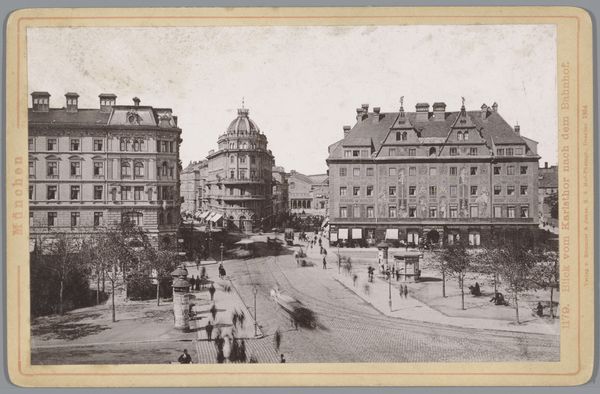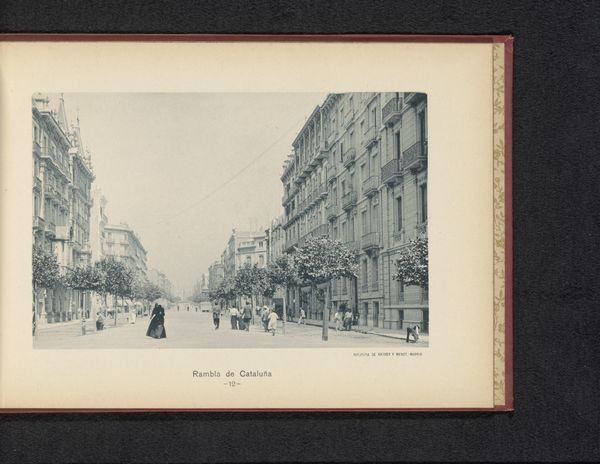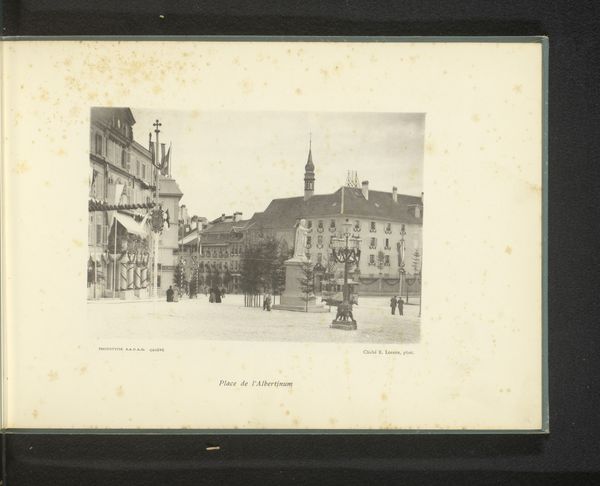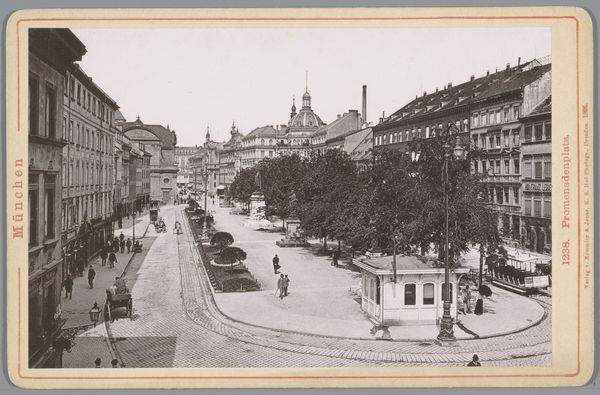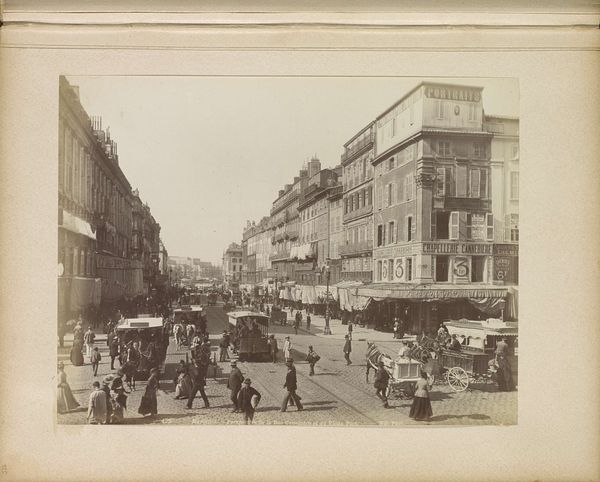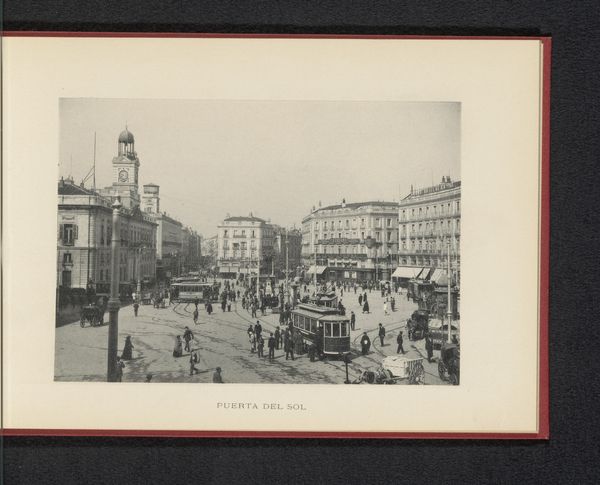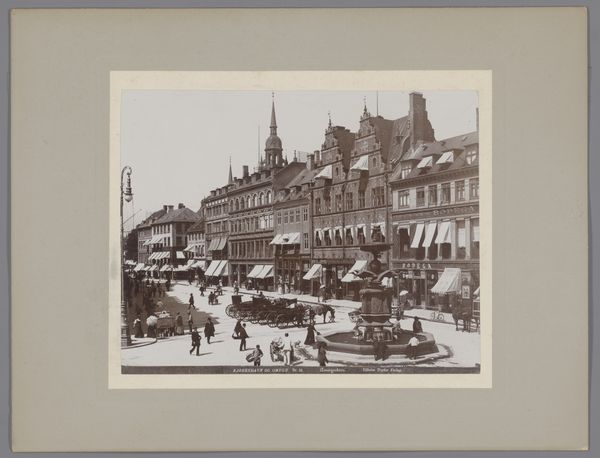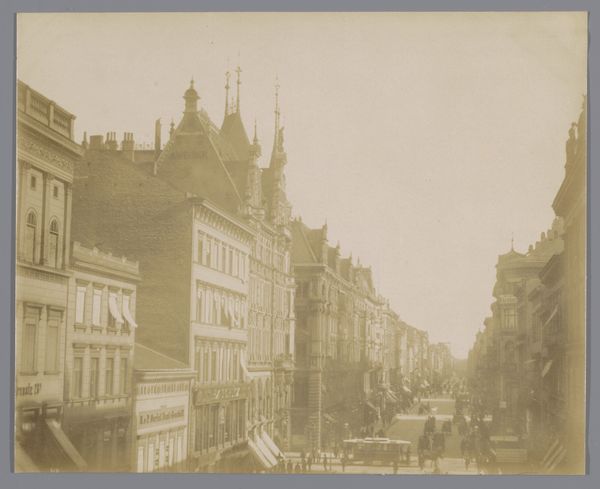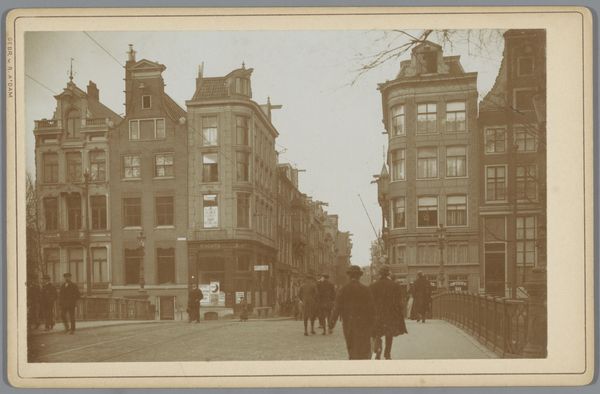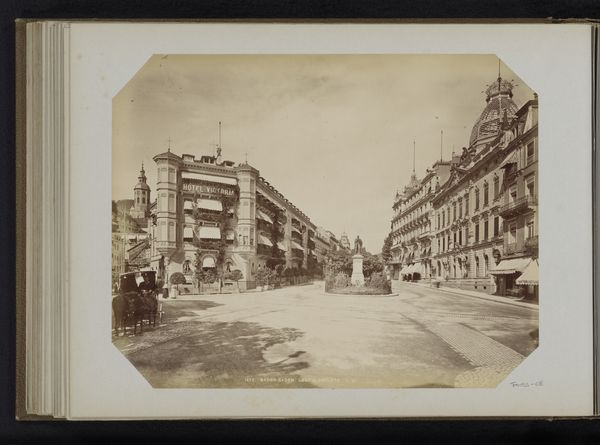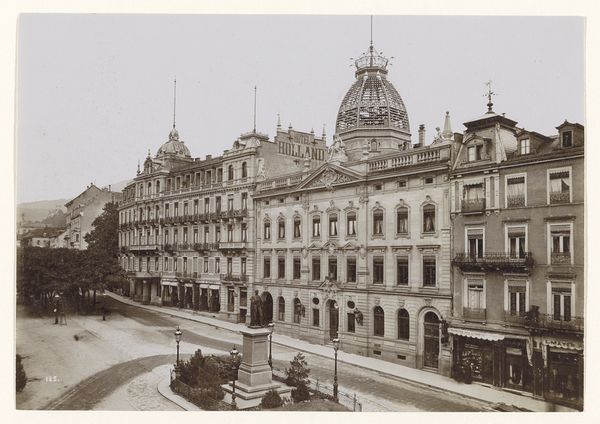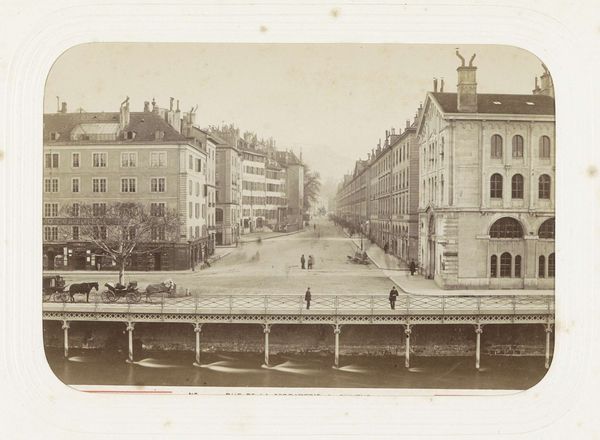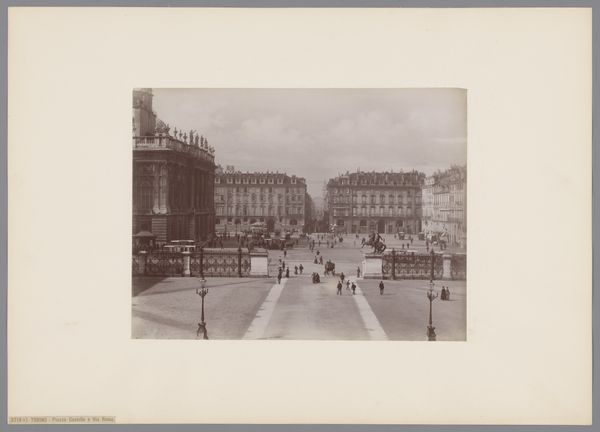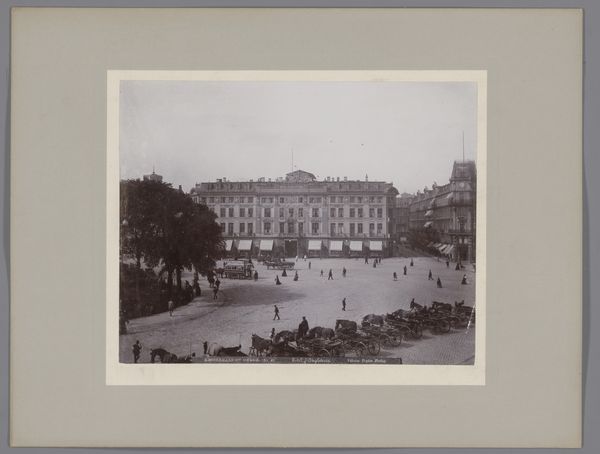
plein-air, photography, architecture
#
plein-air
#
german-expressionism
#
street-photography
#
photography
#
cityscape
#
architecture
Dimensions: height 258 mm, width 355 mm
Copyright: Rijks Museum: Open Domain
Curator: This photograph is titled "Straatgezicht te Düsseldorf," placing it as a cityscape scene from Düsseldorf, Germany, dating back to 1897. It’s part of the Rijksmuseum collection. What are your first impressions? Editor: Immediately, a melancholic stillness washes over me. It feels like a ghost town, a beautiful, grand ghost town with those imposing buildings. The monochrome palette definitely heightens that feeling of being caught between eras. Curator: Indeed, the monochrome aesthetic and sharp architectural lines create a striking formal contrast. The buildings dominate, almost pressing in on the sparsely populated street. Semiotically, we might read the emptiness as representative of a specific socio-historical context. Editor: Perhaps the birth of modern photography mirroring a society becoming aware of its own loneliness? Or maybe the photographer was just impatient waiting for people to move! Look at the tones though—they’re wonderful; those dark awnings against the paler stone create lovely visual rhythms. The photographer captured something solid yet ephemeral. Curator: The interplay of light and shadow, certainly. Observe the composition. The street recedes into a vanishing point, framed by the buildings. This creates a powerful sense of depth, reinforced by the architectural detail and texture—evident even in a relatively early photographic work. Editor: It feels like looking at a stage set, a grand performance paused between acts. Those figures on the sidewalk look almost like props. It definitely reminds me of certain German Expressionist paintings trying to convey that sense of anxiety with city living. The buildings exude a tangible, though restrained, tension. Curator: The association with German Expressionism is interesting. Though pre-dating its height, the image shares an interest in representing urban alienation through formal distortions. It prompts considerations about architectural authority in shaping emotional experience and perception in the modernising world. Editor: Ultimately, this image whispers to me about fleeting moments and enduring structures, how architecture tries to imprint meaning upon our lives, and sometimes just accentuates our smallness within its vast, stony embrace. A lovely captured street scene. Curator: It does leave us considering the photograph's documentative intent intersecting with an undeniable emotional narrative—a tension which enriches our understanding of early photography.
Comments
No comments
Be the first to comment and join the conversation on the ultimate creative platform.
